Chrysler 2009 Annual Report Download - page 203
Download and view the complete annual report
Please find page 203 of the 2009 Chrysler annual report below. You can navigate through the pages in the report by either clicking on the pages listed below, or by using the keyword search tool below to find specific information within the annual report.-
 1
1 -
 2
2 -
 3
3 -
 4
4 -
 5
5 -
 6
6 -
 7
7 -
 8
8 -
 9
9 -
 10
10 -
 11
11 -
 12
12 -
 13
13 -
 14
14 -
 15
15 -
 16
16 -
 17
17 -
 18
18 -
 19
19 -
 20
20 -
 21
21 -
 22
22 -
 23
23 -
 24
24 -
 25
25 -
 26
26 -
 27
27 -
 28
28 -
 29
29 -
 30
30 -
 31
31 -
 32
32 -
 33
33 -
 34
34 -
 35
35 -
 36
36 -
 37
37 -
 38
38 -
 39
39 -
 40
40 -
 41
41 -
 42
42 -
 43
43 -
 44
44 -
 45
45 -
 46
46 -
 47
47 -
 48
48 -
 49
49 -
 50
50 -
 51
51 -
 52
52 -
 53
53 -
 54
54 -
 55
55 -
 56
56 -
 57
57 -
 58
58 -
 59
59 -
 60
60 -
 61
61 -
 62
62 -
 63
63 -
 64
64 -
 65
65 -
 66
66 -
 67
67 -
 68
68 -
 69
69 -
 70
70 -
 71
71 -
 72
72 -
 73
73 -
 74
74 -
 75
75 -
 76
76 -
 77
77 -
 78
78 -
 79
79 -
 80
80 -
 81
81 -
 82
82 -
 83
83 -
 84
84 -
 85
85 -
 86
86 -
 87
87 -
 88
88 -
 89
89 -
 90
90 -
 91
91 -
 92
92 -
 93
93 -
 94
94 -
 95
95 -
 96
96 -
 97
97 -
 98
98 -
 99
99 -
 100
100 -
 101
101 -
 102
102 -
 103
103 -
 104
104 -
 105
105 -
 106
106 -
 107
107 -
 108
108 -
 109
109 -
 110
110 -
 111
111 -
 112
112 -
 113
113 -
 114
114 -
 115
115 -
 116
116 -
 117
117 -
 118
118 -
 119
119 -
 120
120 -
 121
121 -
 122
122 -
 123
123 -
 124
124 -
 125
125 -
 126
126 -
 127
127 -
 128
128 -
 129
129 -
 130
130 -
 131
131 -
 132
132 -
 133
133 -
 134
134 -
 135
135 -
 136
136 -
 137
137 -
 138
138 -
 139
139 -
 140
140 -
 141
141 -
 142
142 -
 143
143 -
 144
144 -
 145
145 -
 146
146 -
 147
147 -
 148
148 -
 149
149 -
 150
150 -
 151
151 -
 152
152 -
 153
153 -
 154
154 -
 155
155 -
 156
156 -
 157
157 -
 158
158 -
 159
159 -
 160
160 -
 161
161 -
 162
162 -
 163
163 -
 164
164 -
 165
165 -
 166
166 -
 167
167 -
 168
168 -
 169
169 -
 170
170 -
 171
171 -
 172
172 -
 173
173 -
 174
174 -
 175
175 -
 176
176 -
 177
177 -
 178
178 -
 179
179 -
 180
180 -
 181
181 -
 182
182 -
 183
183 -
 184
184 -
 185
185 -
 186
186 -
 187
187 -
 188
188 -
 189
189 -
 190
190 -
 191
191 -
 192
192 -
 193
193 -
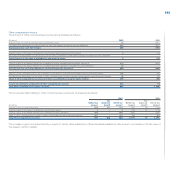 194
194 -
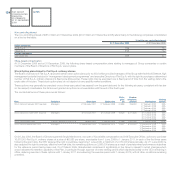 195
195 -
 196
196 -
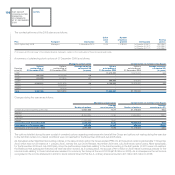 197
197 -
 198
198 -
 199
199 -
 200
200 -
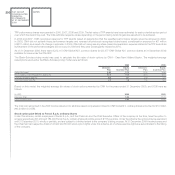 201
201 -
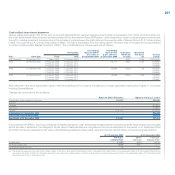 202
202 -
 203
203 -
 204
204 -
 205
205 -
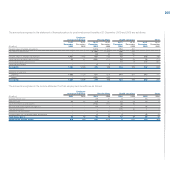 206
206 -
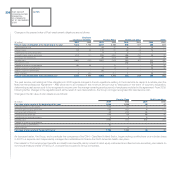 207
207 -
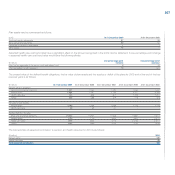 208
208 -
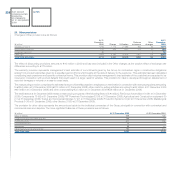 209
209 -
 210
210 -
 211
211 -
 212
212 -
 213
213 -
 214
214 -
 215
215 -
 216
216 -
 217
217 -
 218
218 -
 219
219 -
 220
220 -
 221
221 -
 222
222 -
 223
223 -
 224
224 -
 225
225 -
 226
226 -
 227
227 -
 228
228 -
 229
229 -
 230
230 -
 231
231 -
 232
232 -
 233
233 -
 234
234 -
 235
235 -
 236
236 -
 237
237 -
 238
238 -
 239
239 -
 240
240 -
 241
241 -
 242
242 -
 243
243 -
 244
244 -
 245
245 -
 246
246 -
 247
247 -
 248
248 -
 249
249 -
 250
250 -
 251
251 -
 252
252 -
 253
253 -
 254
254 -
 255
255 -
 256
256 -
 257
257 -
 258
258 -
 259
259 -
 260
260 -
 261
261 -
 262
262 -
 263
263 -
 264
264 -
 265
265 -
 266
266 -
 267
267 -
 268
268 -
 269
269 -
 270
270 -
 271
271 -
 272
272 -
 273
273 -
 274
274 -
 275
275 -
 276
276 -
 277
277 -
 278
278 -
 279
279 -
 280
280 -
 281
281 -
 282
282 -
 283
283 -
 284
284 -
 285
285 -
 286
286 -
 287
287 -
 288
288 -
 289
289 -
 290
290 -
 291
291 -
 292
292 -
 293
293 -
 294
294 -
 295
295 -
 296
296 -
 297
297 -
 298
298 -
 299
299 -
 300
300 -
 301
301 -
 302
302 -
 303
303 -
 304
304 -
 305
305 -
 306
306 -
 307
307 -
 308
308 -
 309
309 -
 310
310 -
 311
311 -
 312
312 -
 313
313 -
 314
314 -
 315
315 -
 316
316 -
 317
317 -
 318
318 -
 319
319 -
 320
320 -
 321
321 -
 322
322 -
 323
323 -
 324
324 -
 325
325 -
 326
326 -
 327
327 -
 328
328 -
 329
329 -
 330
330 -
 331
331 -
 332
332 -
 333
333 -
 334
334 -
 335
335 -
 336
336 -
 337
337 -
 338
338 -
 339
339 -
 340
340 -
 341
341 -
 342
342 -
 343
343 -
 344
344 -
 345
345 -
 346
346 -
 347
347 -
 348
348 -
 349
349 -
 350
350 -
 351
351 -
 352
352 -
 353
353 -
 354
354 -
 355
355 -
 356
356 -
 357
357 -
 358
358 -
 359
359 -
 360
360 -
 361
361 -
 362
362 -
 363
363 -
 364
364 -
 365
365 -
 366
366 -
 367
367 -
 368
368 -
 369
369 -
 370
370 -
 371
371 -
 372
372 -
 373
373 -
 374
374
 |
 |

202 FIAT GROUP
CONSOLIDATED
FINANCIAL
STATEMENTS
AT 31 DECEMBER
2009
NOTES
The fair value of the above mentioned rights at 31 December 2009 and at 31 December 2008 amounts to:
Fair value at 31 December 2009 Fair value at 31 December 2008
Fiat S.p.A. GM $1 Fiat S.p.A.
(€) ordinary share 2/3 share ordinary share
2002 Plan 0.02 0.03 0.11
2003 Plan 3.57 0.31 0.78
2004 Plan 5.23 0.51 1.23
The liability arising on this plan at 31 December 2009 amounted to €0.5 million (€0.2 million at 31 December 2008). The intrinsic value of these plans at 31
December 2009, amounted to €0.3 million (zero at 31 December 2008).
Provisions for employee benefits25.
Group companies provide post-employment benefits for their active employees and for retirees, either directly or by contributing to independently
administered funds. The way these benefits are provided varies according to the legal, fiscal and economic conditions of each country in which the Group
operates, the benefits generally being based on the employees’ remuneration and years of service.
Group companies provide post-employment benefits under defined contribution and/or defined benefit plans.
In the case of defined contribution plans, the Group pays contributions to publicly or privately administered pension insurance plans on a mandatory,
contractual or voluntary basis. Once the contributions have been paid, the Group has no further payment obligations. The entity recognise the contribution
cost when the employee has rendered his service and includes this cost by destination in Cost of sales, Selling, general and administrative costs and
Research and development costs. In 2009, these expenses totalled €1,292 million (€1,366 million in 2008).
Defined benefit plans may be unfunded, or they may be wholly or partly funded by contributions by an entity, and sometimes by its employees, into an entity,
or fund, that is legally separate from the employer and from which the employee benefits are paid. Benefits are generally payable under these plans after the
completion of employment. The plans are classified by the Group on the basis of the type of benefit provided as follows: Reserve for employee severance
indemnity (TFR), Pension plans, Health care plans and Other.
Reserve for employee severance indemnity (“TFR”)
The TFR consists of the residual obligation for severance indemnities which was required until 31 December 2006 under Italian legislation to be paid to employees
of Italian companies with more than 50 employees when leaving the company, and accrued over the employee’s working life for other companies. This provision
is settled to retiree employees and may be partially paid in advance if certain conditions are met. This defined benefit post-employment plan is unfunded.
Pension plans
The item Pension plans consists principally of the obligations of Group companies operating in the United States (mainly to the CNH – Case New Holland
Sector) and in the United Kingdom towards certain employees and former employees of the Group.
Under these plans a contribution is generally made to a separate fund (trust) which independently administers the plan assets. The Group’s funding policy
is to contribute amounts to the plan equal to the amounts required to satisfy the minimum funding requirements prescribed by the laws and regulations of
each individual country. Prudently the Group makes discretionary contributions in addition to the funding requirements. If these funds are overfunded, that
is if they present a surplus compared to the requirements of law, the Group companies concerned may not be required to contribute to the plan in respect
of the minimum performance requirement as long as the fund is in surplus.
The investment strategy for these assets depends on the features of the plan and on the maturity of the obligations. Typically long-term plan benefit
obligations are funded by investing mainly in equity securities; short and medium-term plan benefit obligations are funded by investing in fixed income
securities, which are less volatile.
In the United Kingdom the Group participates in a plan financed by various entities belonging to the Group, called the “Fiat Group Pension Scheme”,
amongst others. Under this plan, participating employers make contributions on behalf of their active employees (active), retirees and employees who have
left the Group but have not yet retired (deferred).
